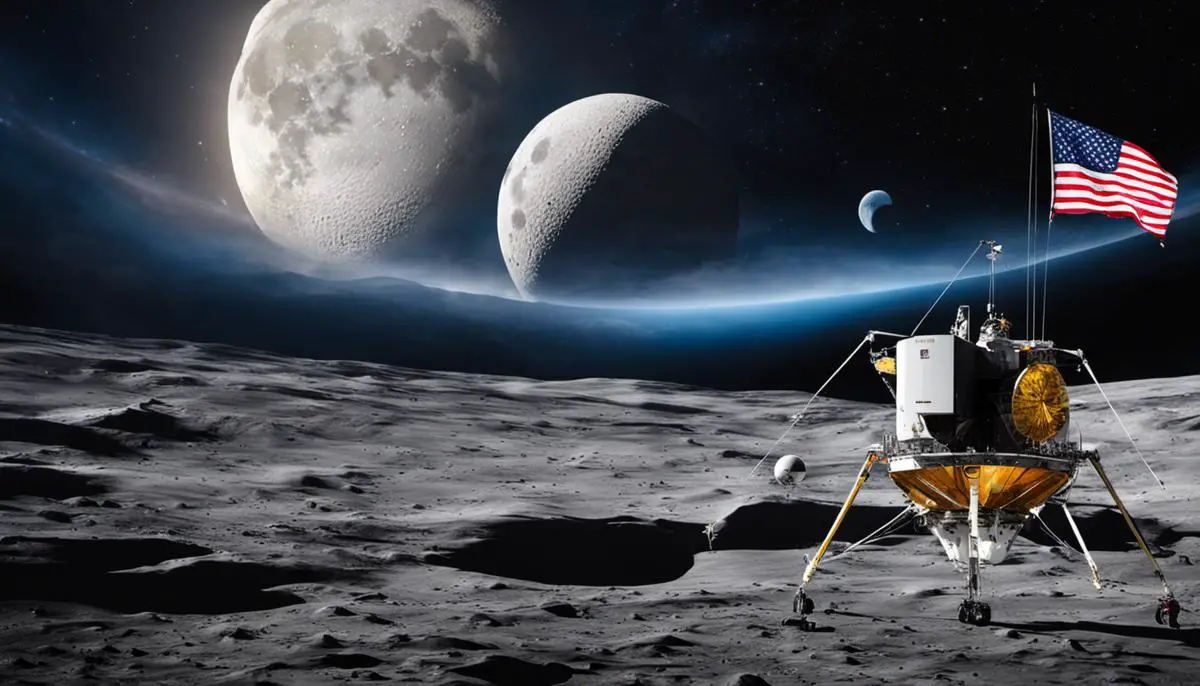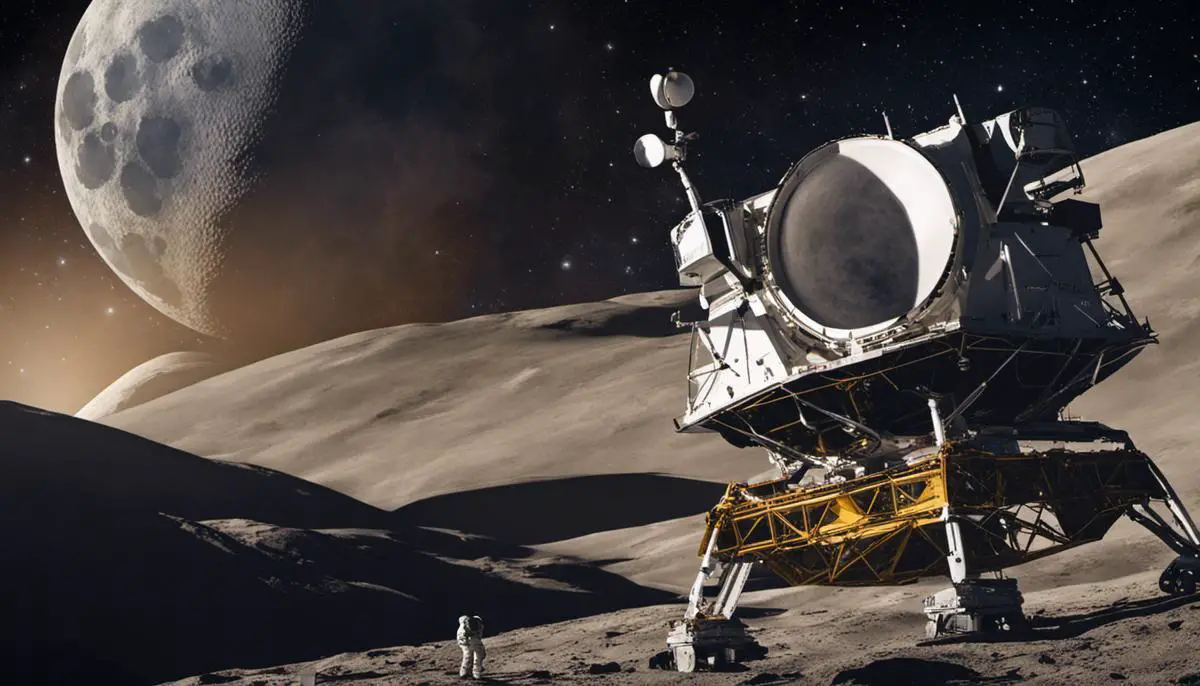Envision a future where multiple nations converge on a unified mission – to explore and inhabit our closest celestial neighbor, the Moon. This is not science fiction, but the reality of NASA’s Artemis Program, a pioneering undertaking that plans to both return humanity to the lunar surface by 2024 and establish sustainable human presence there by 2027. This ambitious program is a testament to the value of international collaboration in pushing the boundaries of human capabilities in space exploration. By pooling global intellectual and material resources, the Artemis mission not only highlights the benefits of shared expertise and resources but also illuminates the challenges inherent in synchronizing multiple nations’ technologies, political interests, and safety procedures.
Contents
Overview of Artemis Program
The International Partnerships
Pivoting from the broad aims of the Artemis Program, it is essential to delve into the international collaboration aspect. The ambitious exploration demands the convergence of technical prowess, financial resources, and innovative approaches from across the globe. This multinational feat is bolstered by key partnerships with countries such as Canada, Italy, Japan, the United Kingdom, and especially the European Space Agency (ESA).
The Canadian Space Agency (CSA) bolsters the Artemis Program with their robotics expertise, a legacy built during the international cooperation involved in the International Space Station (ISS). Significantly, they are developing Canadarm3, an AI-powered intelligent robotic system intended to act as a crucial infrastructure for the Gateway – the Artemis mission’s lunar outpost.
Italy and NASA share a long-standing space research partnership stretching back to the ‘Space Shuttle’ era. Through the Italian Space Agency (ASI), Italy pledged a series of contributions, including modules and habitation elements for the Gateway.
Japan’s involvement, under the Japan Aerospace Exploration Agency (JAXA), also brings notable significance. Their expertise in lunar surface exploration will be crucial for the Artemis missions. Moreover, Japan is projected to leverage its state-of-the-art HTV-X cargo vehicle to deliver supplies to the lunar Gateway.
The United Kingdom’s participation, guided by the UK Space Agency, is primarily in the realms of telecommunications and lunar surface technologies. This will enhance communication between astronauts, rovers, habitats, and Earth, thereby playing a critical role in tomorrow’s lunar exploration.
However, the most substantial international partner is by far the ESA. The agency is contributing a plethora of indispensable elements: the European Service Module (a critical component of Orion spacecraft), habitation and refueling modules for the lunar Gateway, and lunar communication systems. Their advanced space tech is integral to the success of the Artemis Program as a whole.
In essence, it is vivid that the international players in the Artemis Program are not mere adjuncts, but rather core components driving the mission forward. The pooling of resources, knowledge, and expertise is vital to surmount the challenges posed by lunar, and potentially Martian, colonization. As ambitious as the Artemis Program is, international cooperation underscores its feasibility, reflecting a global commitment to push the boundaries of human exploration and knowledge. This is a testament to the adage that we are stronger together, even when aiming for the moon.

Benefits of the International Collaborations
As we delve deeper into the mechanisms underpinning international collaboration in NASA’s Artemis Program, one can glean transformative benefits that positively impact the global space exploration community. Engaging several countries to partake in a joint exploration of lunar landscapes is nothing short of a testament to the unyielding quest for knowledge that lies at the heart of every true scientist.
International collaborations advance the Artemis Program in several ways. Firstly, each participating nation contributes unique technological capabilities that better equip the mission. For instance, Canada’s Canadarm3 robotic system, a mechanical marvel, is anticipated to play a substantial role in astronaut safety, mission success, and the operation of the lunar Gateway.
Furthermore, Italy’s contributions extend beyond their long-standing commitment to NASA. Through the Italian Space Agency, Italy has offered up robust technological prowess, specifically in constructing vital elements of the Gateway. This expertise enables a more sophisticated platform for scientific research and the execution of lunar surface operations.
Japan’s profound expertise in lunar surface exploration, drawn from its successful Lunar Exploration Program, lends weight to the collective understanding of our celestial neighbor. Notably, their commitment to mobility services will enhance the feasibility of navigational tasks, providing astronauts with the maneuverability needed to navigate harsh lunar terrain.
The United Kingdom also proffers a strategic edge, focusing primarily on telecommunications and lunar surface technologies. These are essential components in overcoming the challenges of long-distance communication and the management of data from lunar-based operations.
The European Space Agency’s (ESA) participation underscores the intercontinental nature of the endeavor. The ESA’s commitment to providing essential components — including the European Service Module, which propels the Orion spacecraft, and significant elements of the lunar Gateway—demonstrates an indomitable spirit of international cooperation.
In essence, the Artemis Program, though seeded by NASA, relies heavily on the pooled resources, knowledge, and expertise from its international partners. Each collaboration enhances the Program’s overall capabilities, fostering an accompaniment of technology and knowledge transfer. The fusion of varied technological proficiencies and coinciding perspectives enormously enriches our capacity to venture into the unknown.
The magnitude of the Artemis Program carries with it an intrinsic need for international cooperation. The complexity, cost, and sheer scale of the program necessitates collective effort; an effort that individual nations may find overwhelming. By pooling resources and expertise, the space-faring nations can jointly shoulder the financial and logistical burdens, substantiating the feasibility and ambition of the Program.
Ultimately, international collaborations move the needle of the Artemis Program closer to its objective of sustainable human exploration of the lunar surface. As we align our expertise, resources, and passions, we foster deeper connections, paving the way for a future where the exploration of vast cosmic expanses is not just a vision but a reality.

Challenges & Solutions in International Collaborations
Intertwined within the complex strategy of the mission for sustained lunar presence is the involvement of international partnerships, each bringing superior specialties and mechanisms to the table. However, these partnerships are not without their challenges. Primarily, one of the key obstacles includes balancing national interests and international cooperation while developing the strategic global alliance that is Artemis. Established policies and strategies have been revisited and restructured to accommodate each participating country, forging a synchronized route that meets collective ambitions and individual country objectives.
This scenario often gives rise to considerable litigation, regulatory complications, and policy frameworks that need to be methodically established to ensure smooth operation and unified goals. Esteemed space law experts, together with diplomats and international relations specialists, continue to work diligently, scrutinizing each detail to reach a fair consensus, reducing conflicts, and maintaining the streamlined execution of the program.
Despite being an international endeavor, the Artemis Program demands a thorough understanding of each country’s space treaties, a comprehensive grasp of its implications on the integral components contributed by international partners. Avoiding the pitfalls in policy non-compliance, each act, or decision has been meticulously mapped in accordance with the Outer Space Treaty of 1967 which governs international space law.
Complications also arise due to the heterogeneous nature of technologies, systems, and protocols used by different countries. To circumvent this, efforts have been focused on comprehensive and mission-specialized training programs for astronauts. Additionally, standardization of systems and protocols has been adopted, insisting on the compatibility of hardware and software contributions, regardless of the country of origin, to reduce complexity and increase efficiency.
Operating in the domain of space exploration that evolves rapidly, maintaining the relevancy of contributed fields of expertise is another challenge. Identifying key strengths, encouraging advancements, and updating the related technologies have been made possible by promoting a synergistic environment for research and development, ensuring that the contributions are in synchrony with the advancements in the field.
Despite these challenges, the Artemis program’s partnerships have dealt ingeniously with the obstacles, enhancing the mission’s overall capability rather than limiting it. Successful partnerships between space agencies of numerous countries signify the triumph not only of overcoming terrestrial challenges but also of fostering cooperation beyond borders. Essential components and unique expertise brought by different nations underpin the uniqueness and grandeur of Artemis, paving the way for this unprecedented global effort to land “the first woman and the next man” on the Moon and establish a sustainable human presence there.
In summary, the challenges arising from the international partnerships of the Artemis Program have been adroitly mitigated, maintaining the vitality of the mission. Auxiliary in nature, these partnerships play an undeniably central role in actualizing the dream of sustainable lunar colonization – a testament to the power of unified exploration in the omnipotent realm of outer space.

The future prospect of these international collaborations
The International Components in the Artemis Program
Leveraging transnational partnerships and resources, a tour de force is underway to launch the Artemis Program, a hallmark project by NASA. Embedded in this project’s landscape is the overwhelming international involvement, positioning the program at the heart of global cooperation on lunar exploration tasks.
Stimulating a global balance in national interests and international contribution is paramount for the program. Lingering above this grand scheme of lunar exploration is a delicate task of harmonizing national prestige, scientific objectives, international alliances, policy frameworks, regulatory complications, and numerous litigations. Overcoming these terrestrial legal and policy hurdles requires an unparalleled level of coordination and diplomacy that will most likely evolve into a new global forefront in handling international space exploration arrangements.
Imperative in this process is the understanding and administration of international space treaties and their implications. With their roots in the mid-20th century, the international space agreements, like the Outer Space Treaty, dictate the cardinal rules of space conduct. These norms not only balance the benefits and commitments of each stakeholder but also provide an adjudicative framework to resolve disputes and navigate issues related to resource extraction, dual-use technologies, and the military activities.
Another aspect of this international collaboration is the standardization of technologies, systems, and protocols. The Artemis Program presents a key opportunity in the dawn of more integrated and globally focused space exploration endeavors. Facilitating interoperability and compatibility between different components and systems, contributed by different nations, requires a grand synchronization effort. This standardization process would be significant in terms of time, resources, and technical prowess but surely a step in the right direction to ensure the program’s success, safety, and resilience.
An integral part of the program, comprehensive training programs will be essential to equip astronauts with the necessary skills and expertise to tackle the unique challenges posed by lunar missions. These instructional initiatives are fundamental not only in terms of safety but also from an operational perspective as they would involve participants from varying international backgrounds. This will help ensure comprehensive training by combining diverse experiences and skills from different nations, thereby providing a rich learning environment.
In the rapidly evolving field of space exploration, maintaining the relevancy of each country’s contributions and expertise is both crucial and challenging. International collaboration brings together a pool of expert scientists, engineers, and astronauts, each providing their unique insights and knowledge. This diverse infusion of intelligence nurtures creativity and technical growth in the face of accelerating technological change, enabling the Artemis Program to stay at the forefront of space exploration.
The Artemis Program is not just about reaching the Moon; it is a testament to human capability and cooperation. The substantial international collaboration paves the way for fostering unity beyond national borders, reaching toward our celestial neighbor. Each triumph in this arduous journey epitomizes human resilience and synergy.
The uniqueness and grandeur of the Artemis Program lie not merely in its ambitious objects or state-of-the-art technologies. It is equally reflected in the global unity and collaborations kindled during this astronomical endeavor. The Artemis Program underscores the potential and necessity of international cooperation in establishing the first sustainable human presence on the Moon. It is a beacon calling the world to work together toward exploring the world beyond ours, setting a paragon for future ventures in space exploration.

The future of international collaborations within Artemis Program holds promise far beyond the moon. The successful execution of the program would provide a template for ambitious, interplanetary missions, unlocking unprecedented potential for human exploration. Whereas the challenges standing before these collaborations are many, the fruits of overcoming them hold the promise of a interconnected future where global unity in scientific research and exploration defines our approach to discovery. The learnings derived from the Artemis mission will undoubtedly refine our understanding of international cooperation in achieving collective objectives. The shared legacy of encountering the unfamiliar, the sense of being part of something bigger, and the possibility of making the outer space a new frontier for mankind is indeed a future worth aspiring to.
